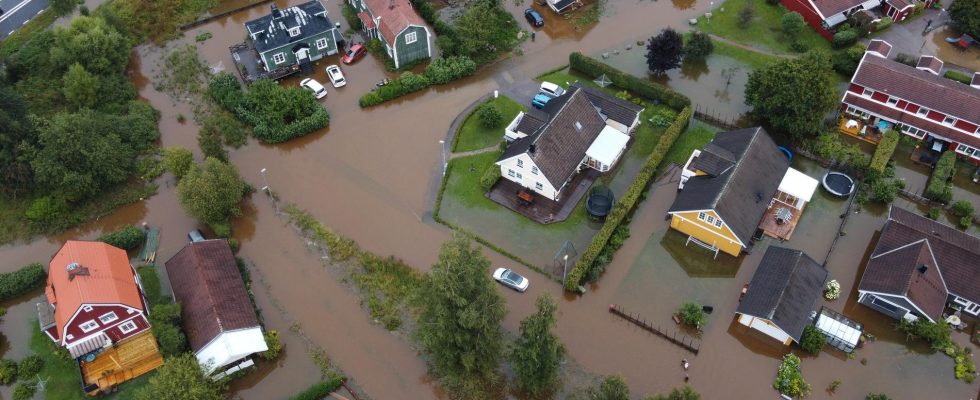unsaveSave
Gävle, Sundsvall, Eskilstuna, Västerås and Varberg are new areas on the list that MSB has identified as extra vulnerable to flooding. There are now a total of 26 areas in Sweden with significant flood risks
expand-left
full screen Drone image of residential area in Gävle that was hit by torrential rain August 2021. Photo: Aftonbladet / Andreas Bardell
A new review of areas has been carried out by the Authority for Community Protection and Preparedness, MSB, along Sweden’s larger waterways and lakes. But also along the coast. The review has identified five new areas where there is a significant risk of flooding during heavy rainfall.
The work is an important part of society’s climate adaptation work and in the work to reduce damage to people, property and the environment in Sweden. The areas are geographically spread throughout Sweden, from Haparanda in the north to Falsterbo in the south.
The review shows that there are many people who live in the identified areas and that many socially important activities can also be affected if there are floods. Among other things, the review shows that just over half a million people in Sweden live within the 26 flood-prone areas.
One of the areas that has been added is Gävle. Gävle is identified based on the risk of flooding from both waterways, the sea and torrential rain, the area has also previously suffered from significant flooding. Four areas have been removed, one example is Kungsbacka, which is no longer identified due to new data and a new selection process.
expand-left
full screen Identified areas with significant flood risk: Eskilstuna, Falsterbo, Skanör, Höllviken, Ljunghusen, Falun, Gävle, Gothenburg, Halmstad, Haparanda, Helsingborg, Jönköping, Kalmar, Karlshamn, Karlskrona, Karlstad, Kristianstad, Landskrona, Malmö, Norrköping, Stockholm, Sundsvall, Trelleborg, Uddevalla, Uppsala, Varberg, Västerås, Ystad and Örebro Photo: Msb
– Even if an area has been removed, or is not identified with a significant flood risk, flooding may still occur there and there may still be a known flooding problem. The 26 areas that have been identified are the areas in Sweden that, from a national perspective, have been judged to have the greatest consequences of a flood based on the impact on the population, human health, the environment, cultural heritage and economic activity, comments Maja Coghlan, manager at MSB in a press release.
Eleven areas in the country are also exposed to significant flood risk from more than one type of flood. In five of these areas, significant consequences can occur in the event of flooding from both nearby waterways, the coast and torrential rain.
– Several of the areas are the same as last time, but some have been removed and some have been added. What is new in this review is that MSB also looked at the risk of flooding from torrential rain. Last time there were only risk areas by lakes, waterways and the sea. Five new areas have been added, mainly due to updated data for watercourse and coastal flooding, but also because MSB now expects risks linked to torrential rain, says Maja Coghlan.
Areas no longer identified as being at significant flood risk:
expand-left
full screen
